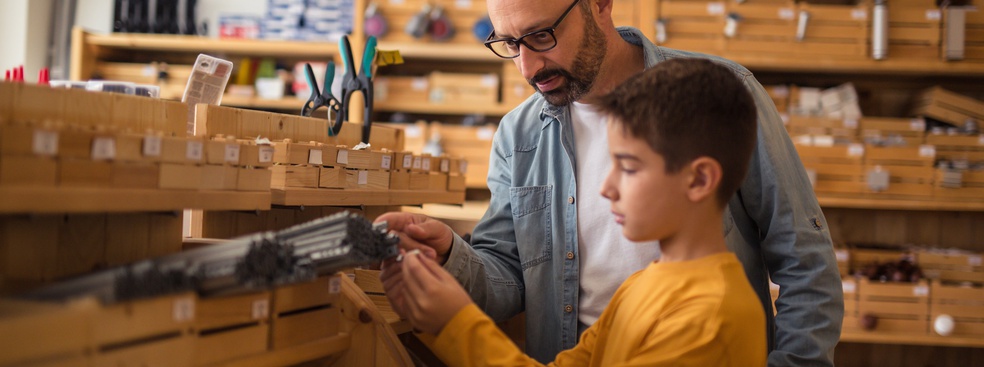Despite upheaval in the luxury industry over the last twenty years, families are still important for luxury innovation and brand management. In this first of a two-part article, Ashok Som, Professor of Global Strategy at ESSEC Business School and Co-Director of the ESSEC-Bocconi EMiLUX program, looks into the lessons that family businesses in the luxury industry have traversed, the challenges they confront and how they adapted such that the future of luxury will still be theirs.
Luxury is a place in the family of things
Luxury is a living thing. It is the child of an idea that becomes a creation. It is inherently linked to our human capacity to appreciate the aesthetic, foster desire and strive to be different and unique. It is also, both as an analogy and as a historical fact, a family. And like all families, it grows, develops and changes, has successes and also traverses its fair share of crises.
Crisis there has been and crisis there is. Personified in haute couture, traditional luxury brands – French and Italian – have always been artisan workshops in nature and both the origin and the facilitator for major developments in the luxury goods sector (i.e. the growth of perfumery, luxury leather goods and accessories). These origins were also largely cottage-industry in nature, deeply rooted in regional culture and savoir faire and inherently linked to a family name.
But witness the crises. In the late 1940s, France counted 106 haute couture houses and even until twenty or so years ago, luxury, in its wider sense, was completely family-based in France. The last quarter of a century, however, has seen the selling off of some of the greatest luxury legends that include Chaumet, Guerlin, Givenchy, Gucci, Arpels, Vuitton and Hennessy to name but a few, victim to large, international conglomerates whose argument, in the face of globalization, is founded on developing portfolios of several brands in order to diversify risk, make cost savings, optimise the supply chain and confront the growing cultural diversity of its consumers on an industrial, something-for-everyone scale. Looking at the half-full luxury glass, it may be concluded that this makes sense and that the time of the family-run business has indeed reached an end.
However, a significant number of luxury family businesses indeed still remain – Hermès, Rothschild, Chanel and Rémy Cointreau are only a few examples. And this is without counting the new brands on the scene from emerging countries, notably China, India and Brazil. This has occurred in a context which is not only tough for the family business but also for the large conglomerates: globalization, international counterfeiting, the ease of internet commerce, diversity in consumer culture and tastes and the ability to be agile and flexible in the face of the ever-increasing pace of change that seems so endemic to the twenty-first century. And yet, industry analyses seem to conclude that the luxury family businesses have survived relatively better than their bigger competitors. How, then, can the success of these relatively small, luxury family brands – and indeed the continuing emergence of new luxury tribes – be explained?
Survival of the fittest…and maybe a bit of alchemy too
Family businesses are the oldest and most common type of business organisation across the world that in some countries represent more than seventy per cent of all companies. This is often the case because bonds of kinship provide much stronger contract enforcement than in legal or regulatory institution. But the majority of family businesses have had a very short life span: according to the figures, ninety-five per cent of these businesses do not survive after the third generation of owners. This is principally due to three key factors that will normally ensure the perennity of a family-owned firm: the ability to renew and recycle once the company has reached maturity stage, the setting up of a good governance structure, and the capacity to develop and uphold long-term vision and commitment. In the luxury sector, strong commitment to the brand and delivering quality and service are a must.
Before the 1990s, the luxury sector, particularly high fashion, consisted mostly of small, privately-owned companies, often run by the founder or his or her descendants. Many were poorly managed by conventional standards and suffered from the after effects of cultural and social chaos of the 1960s which had left the luxury business in a delicate situation. With the considerable changes of the twenty-first century, first in the development of the luxury goods industry and then in the economic world, many of these luxury companies have now either transformed themselves from closely held, small-scale family companies into larger-scale, family-controlled companies with various product categories, publicly listed companies run by a professional manager, or been acquired into a brand portfolio under an international conglomerate group.
At this phase, the role of family in the luxury goods industry transformed from the founders and/or designers of the brand to the brand’s identity and personality. In the evolution of the luxury goods industry, from a small-scale individual family company to an international, multibillion-dollar industry, the family name of the men and women responsible for this transformation have become more familiar as brands than as individuals. Yet, as the modern industry struggles to reconcile its artisanal heritage with today’s public offering, it is the personal, family connection that bridges the gap. All in all, businesses run by a team or family members tend to be more resilient and more likely to succeed than any other kind of company since they have one indisputable defining quality: the family. And since family businesses have their name and reputation associated with their products and/or services, they strive to increase the quality of their products and services and to maintain a good relationship with their partners. Indeed, family businesses will continue to play a greater and greater role in world economies into the next century. Data suggests that over 50 percent of the leaders of family businesses in the United States think their businesses will be owned and managed by two or more of their children. One can hope that the family and luxury will continue to have a glittering future ahead of them.
In the forthcoming second part of the full article, Prof. Ashok Som looks at the reasons why many families fail to keep control of their houses beyond the third generation and lays the blueprint for long-term success for family-run businesses in the luxury sector.
Find out more: The Road to Luxury: The Evolution, Markets and Strategies of Luxury Brand Management, A. Som, C. Blanckaert, Wiley 2015









